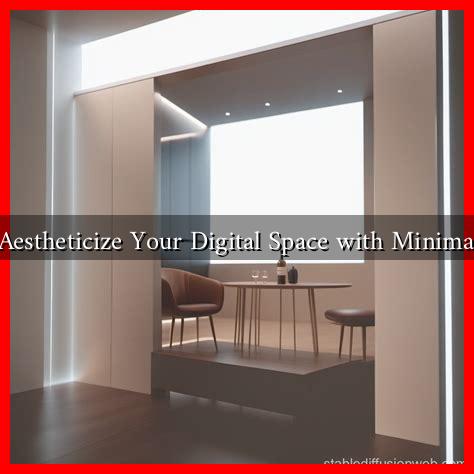-
Table of Contents
- How to Aestheticize Your Digital Space with Minimalist Style
- Understanding Minimalism in the Digital Realm
- Key Principles of Minimalist Design
- Steps to Aestheticize Your Digital Space
- 1. Declutter Your Desktop
- 2. Streamline Your Applications
- 3. Optimize Your Browser
- 4. Curate Your Digital Content
- Case Studies: Successful Minimalist Digital Spaces
- Conclusion
How to Aestheticize Your Digital Space with Minimalist Style
In an age where digital clutter can overwhelm our senses, the minimalist aesthetic has emerged as a refreshing antidote. Minimalism, characterized by simplicity and functionality, can transform your digital space into a serene and organized environment. This article explores how to aestheticize your digital space using minimalist principles, providing practical tips and examples to help you create a visually appealing and efficient workspace.
Understanding Minimalism in the Digital Realm
Minimalism is not just a design trend; it’s a lifestyle choice that emphasizes the importance of simplicity and intentionality. In the digital world, this translates to clean interfaces, limited distractions, and a focus on essential elements. According to a study by the Nielsen Norman Group, users prefer simple designs that allow them to find information quickly, highlighting the importance of minimalism in enhancing user experience.
Key Principles of Minimalist Design
To effectively aestheticize your digital space, it’s essential to understand the core principles of minimalist design:
- Clarity: Ensure that every element serves a purpose and contributes to the overall functionality.
- Whitespace: Utilize empty space to create a sense of balance and focus.
- Limited Color Palette: Stick to a few colors that complement each other to maintain visual harmony.
- Typography: Choose clean, legible fonts that enhance readability without overwhelming the viewer.
Steps to Aestheticize Your Digital Space
Now that you understand the principles of minimalism, here are actionable steps to implement them in your digital space:
1. Declutter Your Desktop
Your desktop is often the first thing you see when you log in. A cluttered desktop can lead to a cluttered mind. Here’s how to declutter:
- Remove unnecessary files and applications.
- Create folders for organization, grouping similar items together.
- Use a clean wallpaper that reflects your minimalist aesthetic, such as a simple landscape or abstract design.
2. Streamline Your Applications
Evaluate the applications you use regularly. Consider the following:
- Uninstall apps that you rarely use.
- Organize apps into folders based on their function (e.g., productivity, entertainment).
- Use minimalist alternatives to popular apps, such as Notedex for note-taking or Trello for project management.
3. Optimize Your Browser
Your web browser can be a significant source of digital clutter. To optimize it:
- Limit the number of open tabs and use bookmarks for frequently visited sites.
- Choose a minimalist browser extension that reduces distractions, such as Focus To-Do.
- Customize your homepage with a simple layout that features only essential links.
4. Curate Your Digital Content
Whether it’s social media or email, curating your digital content is crucial:
- Unfollow accounts that do not add value to your life.
- Organize your email inbox with labels and filters to prioritize important messages.
- Use tools like Feedly to aggregate content from your favorite sources without overwhelming your feed.
Case Studies: Successful Minimalist Digital Spaces
Many successful individuals and companies have embraced minimalism in their digital spaces. For instance, tech giants like Apple and Google utilize minimalist design principles in their interfaces, focusing on user experience and functionality. Their clean designs not only enhance usability but also create a sense of calm and order.
Additionally, personal brands like Marie Kondo have popularized the minimalist lifestyle, encouraging individuals to declutter both their physical and digital spaces. Her approach emphasizes the importance of keeping only what “sparks joy,” a principle that can be applied to digital content as well.
Conclusion
Aestheticizing your digital space with minimalist style is not just about making it look good; it’s about creating an environment that enhances productivity and reduces stress. By decluttering your desktop, streamlining applications, optimizing your browser, and curating your digital content, you can transform your digital experience. Embrace the principles of minimalism to foster clarity, focus, and tranquility in your digital life. Remember, less is often more, and a minimalist approach can lead to a more fulfilling and efficient digital existence.


